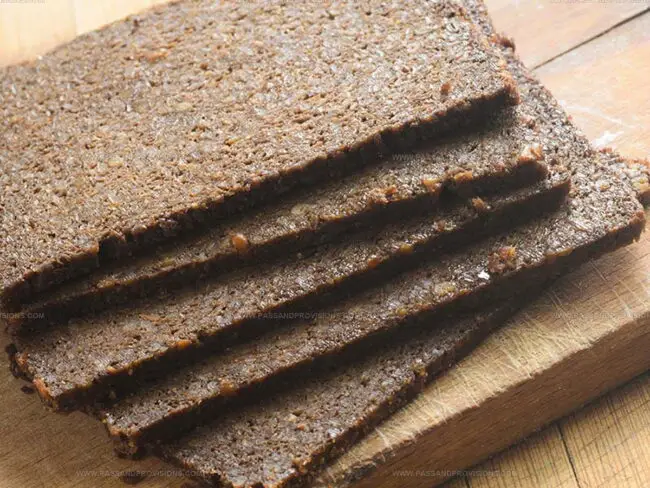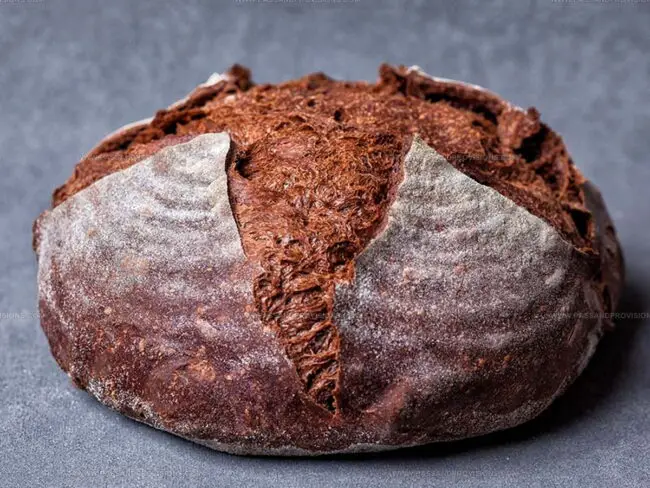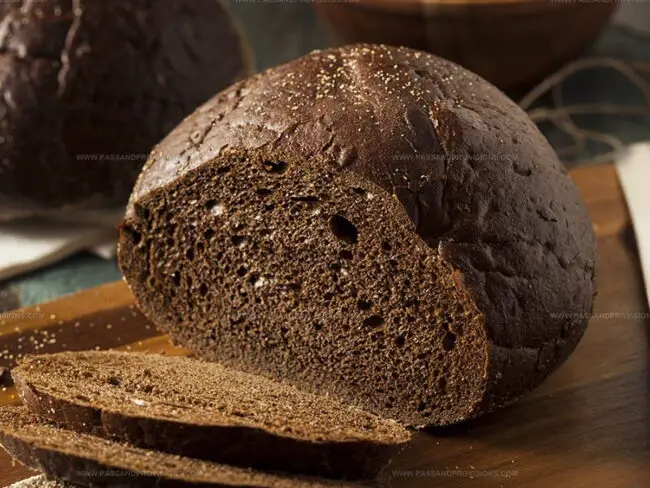What Does Pumpernickel Taste Like? Rich, Earthy Notes Unfold
Dark and dense, pumpernickel bread carries a mysterious culinary reputation that intrigues many food enthusiasts.
German bakers have crafted this unique bread for centuries, transforming simple ingredients into something extraordinary.
Bread lovers often wonder about its distinctive characteristics and flavor profile.
Regional traditions and baking methods contribute to pumpernickel's complex sensory experience.
Rumors and misconceptions swirl around this hearty bread, creating curiosity among those unfamiliar with its rich heritage.
Understanding its nuanced taste requires diving deeper into its ingredients and preparation techniques.
The journey of unraveling pumpernickel's flavor promises to be a delightful gastronomic adventure that will challenge your existing bread expectations.
What Is Pumpernickel?
Pumpernickel stands as a classic German bread with deep roots.
Colored in rich dark brown or nearly black tones, this bread shows little crust definition.
Bakers create its unique taste through a slightly sweet and sour profile.
Whole rye grains form the main ingredient of this special bread.
People sometimes call it Satan bread because it differs from standard rye bread and represents a German bread variation.
Peasant communities originally made pumpernickel, but its popularity grew during the 20th century due to health advantages.
More than just a tasty bread, pumpernickel offers significant nutritional benefits for your body.
Large amounts of lignans in this bread may help protect against prostate and breast cancer risks.
Bread lovers can seek out this special loaf at local bakeries and enjoy its distinctive flavor!
Flavor of Pumpernickel Bread
Sourdough starters give pumpernickel bread a tangy twist, with hints of sweetness like molasses.
Caraway seeds can add an herbal rye-like flavor to the bread, but without them, the taste changes completely.
Different from soft rye bread, pumpernickel comes thick and heavy.
What Americans call pumpernickel isn't truly authentic, so people who enjoy this bread might want to try the original version.
Pumpernickel started as a classic German bread.
Restaurants often serve it alongside soup or chili.
People use it instead of crackers and love it for lunch.
Small differences in its hard crust and soft middle make it special, with taste notes similar to a baguette.
Bakers have created 11 different styles of this beloved bread.
Does Pumpernickel Help With Weight Loss?
Whole-grain breads like pumpernickel offer better nutrition compared to plain white bread.
White bread packs around 75 calories and 1.6 grams of sugar per slice, with barely any fiber at less than one gram.
Pumpernickel provides 80 calories but boasts over 2 grams of fiber and just 0.2 grams of sugar.
Eating more fiber helps people feel satisfied after meals.
Studies show that higher fiber consumption supports weight loss efforts when following reduced-calorie eating plans.
Pumpernickel vs. Rye Bread
Pumpernickel and rye bread are closely related, but they aren't exactly the same. Pumpernickel is actually a type of rye bread, but with a few special qualities that set it apart:
Why Pumpernickel Is So Dark
Dark bread gets its deep brown shade from baking slowly at low heat and using rye kernels with dark middles.
Sometimes whole wheat flour helps create this rich color.
Many brown breads sold in stores (especially in the United States) gain their dark look through added ingredients like molasses, caramel, coffee, or cocoa powder.
Rye bread might look dark based on how much rye flour is mixed with white wheat flour.
Does Pumpernickel Contain Copper or Selenium?
Pumpernickel supports health through important minerals like copper and selenium.
Copper helps brain cells communicate by making special chemicals called neurotransmitters.
This mineral also creates melanin, which shields skin from sunlight damage.
Selenium works like riboflavin to guard body tissues against harm.
Blood vessels stay healthy and muscles work well with selenium's support.
People who eat two slices of Pumpernickel bread receive 17 percent of their daily copper needs, which equals 149 micrograms.
Those same two slices deliver 23% of recommended selenium intake, measuring 13 micrograms.
Is Pumpernickel a Good Source of Lignans?
Plant-based nutrients called lignans show up in high-fiber foods like flax seeds and whole grains such as rye and buckwheat. Gut bacteria change these compounds into helpful substances within the digestive system.
Research suggests lignans carry protective qualities similar to estrogen and work as antioxidants after their conversion.
Studies show lignan intake might lower risks of several health problems, including cancer, heart troubles, bone weakness, and symptoms connected to menopause.
Whole grain pumpernickel flour contains important nutrients like manganese, selenium, phosphorus, B vitamins, and copper. People benefit from these nutrients through support for several body processes:
Can Pumpernickel Cause Allergies?
People with wheat allergies should be cautious about pumpernickel bread.
Rye flour, the main ingredient in pumpernickel, does not contain wheat but still has gluten.
Someone with wheat sensitivity or celiac disease might react to this bread.
Many bakeries make different types of bread in the same space, so cross-contamination could happen.
Some pumpernickel recipes might include wheat flour or whole wheat grains.
Medical professionals have noted a few rare cases of rye flour triggering baker's asthma.
Baker's asthma is an allergic reaction to wheat flour that creates symptoms like eye and nose irritation and breathing problems for workers in bakeries.
Research shows rye flour can cause similar health issues for some individuals.
Uses for Pumpernickel Bread
Pumpernickel bread is known for its deep flavor and sturdy texture, making it a great choice for many meals and snacks:



